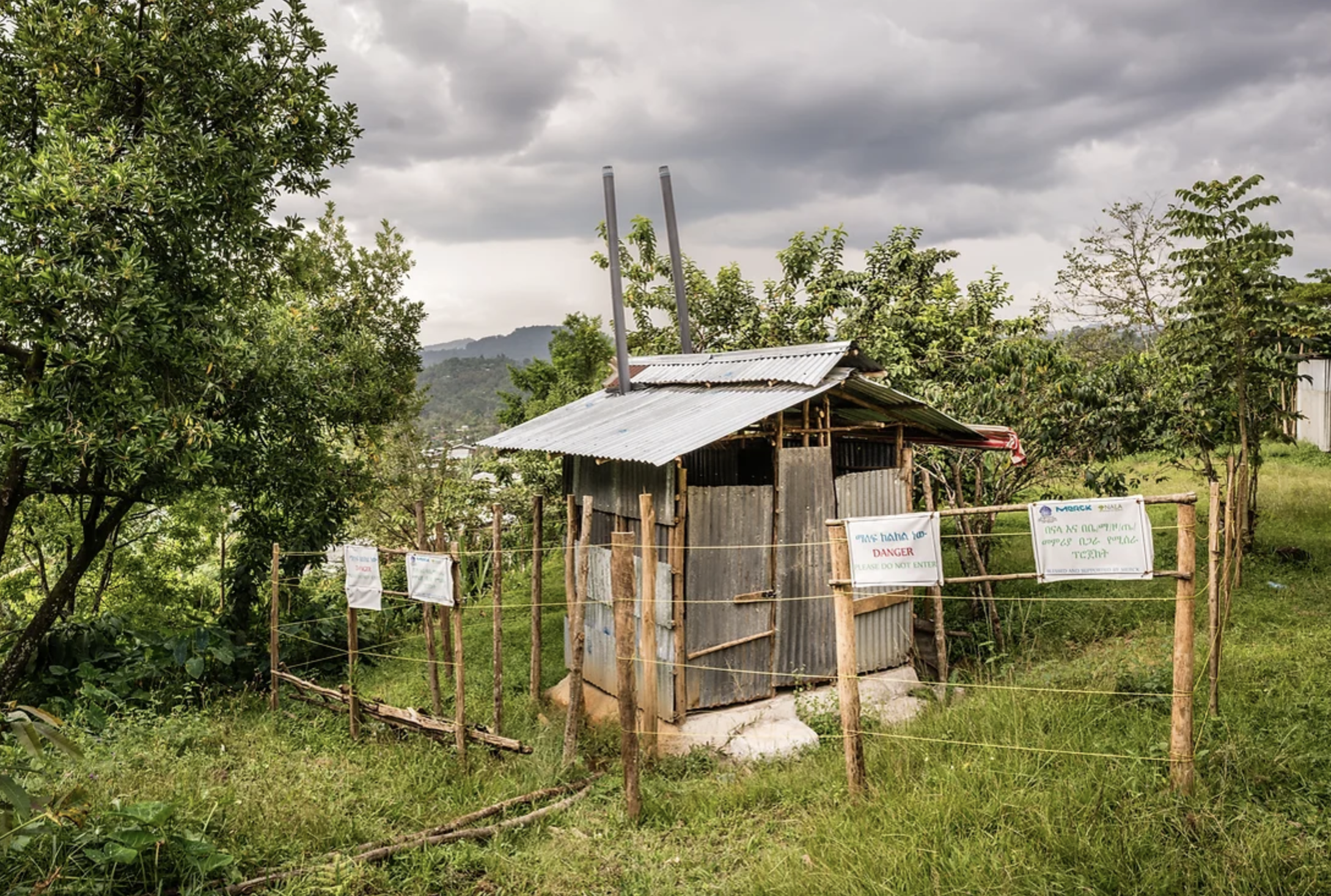Across the world, cell phones are the new newspapers. The pocket-sized technological device acts as the dominant source of information for the average person. The device is so essential to functioning in society that cell phones are now, globally, more common than toilets.
3.6 billion people in the world do not have access to toilets and more than 2 billion people use a drinking water source contaminated with feces according to the UN. A lack of sanitation and hygiene is linked to crippling diseases such as trachoma, a fly born illness that can leave its victims blind. Open defecation creates breeding grounds for these flies, and the lack of health education and resources, like soap, create unhygienic habits, especially in remote areas of the world. A reduction in increased utilization of latrines alone, would make a significant impact in the reduction of neglected tropical diseases (NTDs) like trachoma.
Moreover, providing communities with safe sanitation inhibits the cycle of poverty because individuals who become ill may lose their capacity to work, perhaps for the rest of their lives. NTDs are highly prevalent in women and children, and are diseases that can cause physical and cognitive disabilities, limiting school attendance and jeopardizing a child’s future economic opportunities. Lower socioeconomic class also places individuals in a disabling environment, one which can lead to further exposure to diseases, decreased immunity, and the perpetuation of the chain of transmission. This cycle of infection and reinfection can devastate vulnerable communities all over the world, but by educating, and equipping these communities with the necessary resources, victims of NTDs are able to reclaim their health.
With an innovative and holistic evidence based approach, NALA, an Israeli public health organization working in Ethiopia and around the world, aims to eliminate NTDs, including trachoma, completely. At its core, NALA devotes itself towards pioneering the latest and most sustainable solutions to the sanitation crisis. In 2018 NALA designed and built two latrines for the zonal health department in Mizan Aman. The experimental latrine consisted of several components, a sloping floor to aid with cleaning, a rain harvesting system for sanitation and cleaning and a vent pipe for reducing odors. Built from relatively cheap locally sourced materials, such as corrugated iron sheets, these suitable and affordable toilets were well accepted by the zonal health department, and remain in good condition almost 5 years on.
However, in order to remain on the forefront of innovation and widen its impact, in 2022 NALA collaborated with the Masters of Design Program at Shenkar College of Engineering, Design, and Art in Tel Aviv. When working at Mizan City Elementary School in Ethiopia, NALA observed that school children find the bathrooms not just dirty and unpleasant, but scary and inaccessible. In order to prevent open defecation by reinforcing positive associations with using the restroom, NALA challenged the Master’s students to each create a new design focused on fixing one aspect of the previous dark, odorous, and possibly contaminated bathroom.
The students researched the context, available materials, and latrine utilization issues before designing a range of solutions for addressing the lack of sanitation. The innovative designs ranged from new ventilated restrooms which used coffee bean husks and wood ash after defecation to absorb liquid, in an effort to prevent the breeding of insects, and diminish the odour. The method is easy to use and cost-effective, requiring only one scoop of organic material to help maintain the cleanliness of the latrine, which afterwards can be used for compost. Another design involved stimulating the economy by hiring locals to weave leaves together to create the walls of the latrine leading to more natural lighting and more colorful and positive scenery. One Master’s student proposed the idea of decorating the latrines like a playground and providing games outside the restrooms for waiting elementary students. Considering the fact that 75% of adults use their smartphone on the toilet, the Master’s student proposed blocks, a basketball hoop, and other simple games to create positive associations with using the latrine and reinforce good habits.
Building water pumps and installing pipes in water insecure communities is also economically efficient. Water infrastructure projects also stimulate the local economy and facilitate a sense of responsibility in the local community for the community’s infrastructure and cleanliness as well as one’s own hygiene. One cost-effective solution being implemented by NALA as a pilot project in two regions of Ethiopia is the WASH on Wheels project, which works to restore water in schools through fixing and maintaining inoperable infrastructure. Using a vehicle equipped with tools and technicians which travels to schools fixing infrastructure, the vehicle reached over 90,000 students in over 100 schools within the first six months of the project, a number it is working to double by the end of 2022. The proper use of water for handwashing in schools was similarly complimented by Shenkar College students, with one design promoting hand washing through the use of stencil art on the outside walls of buildings adjacent to the hand washing facility.
Considering that cell phone users have access to more information than ever before, why does the sanitation crisis still exist? Despite the dire need and the numerous consequences associated with poor sanitation, sanitation does not command the public attention the way that other social issues do. Neglected tropical diseases predominantly exist in impoverished and remote areas in lower income countries, such as Ethiopia. Due to this, NTDs are often ignored in the media, despite 1.7 billion people being affected. However, NTDs, including trachoma, the leading cause of preventable blindness worldwide, are preventable. Through simple, innovative, and cost-effective solutions, changes to the sanitation and hygiene of entire communities can be changed and maintained, giving children the opportunity to live a healthier life.
Photograph by Marcus Perkins in collaboration with Merck Science and Technology Company.
